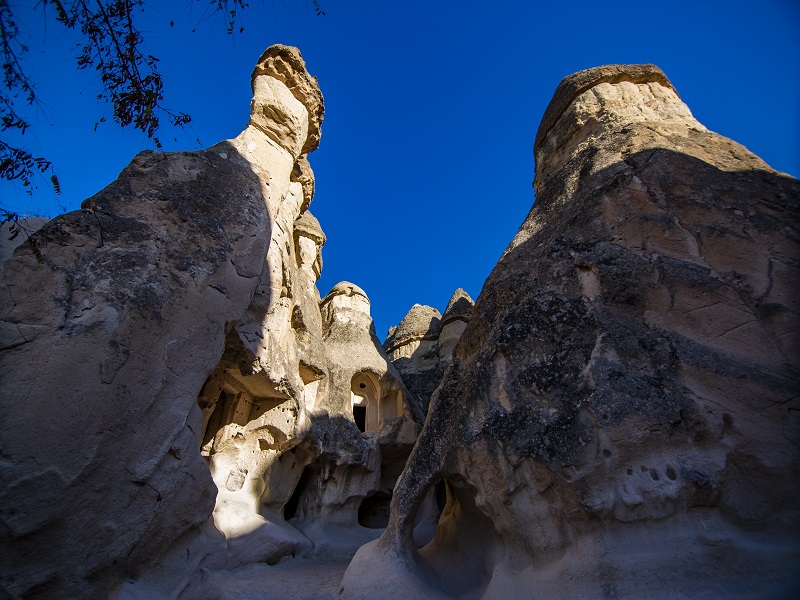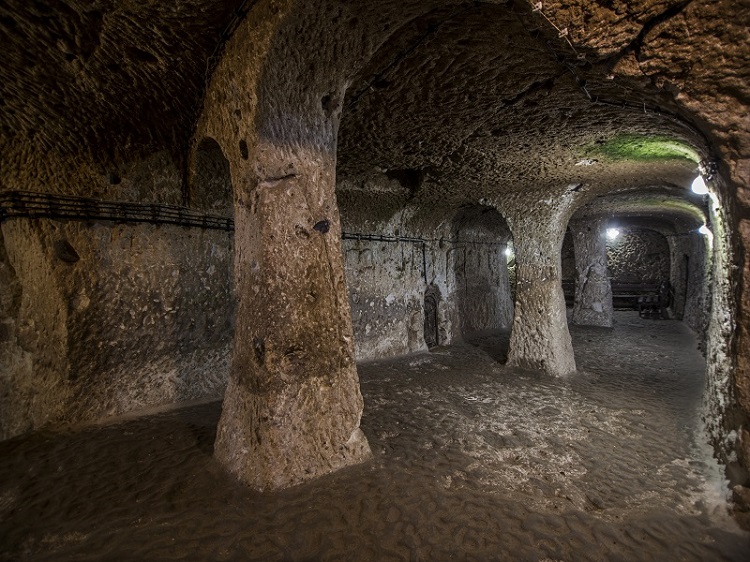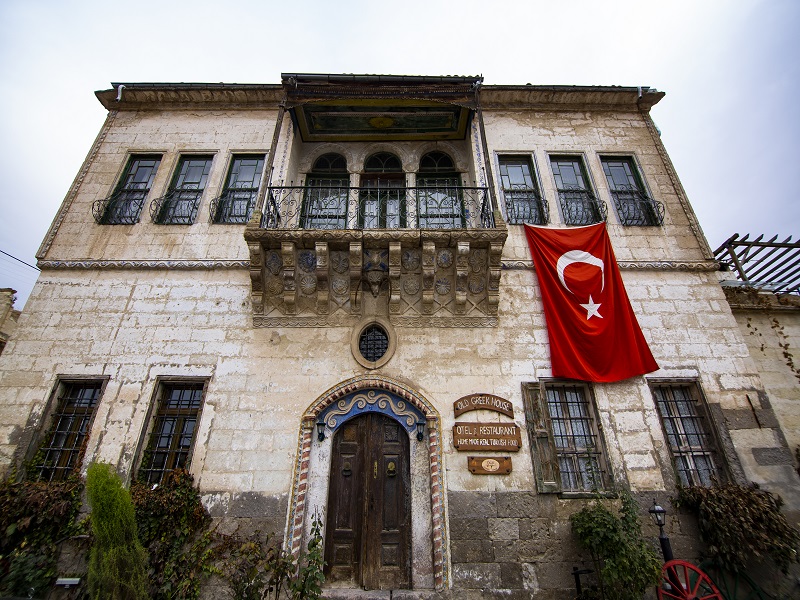Aksaray Faith Route (Islam)
- A
- Somuncu Baba Complex
- He is one of the great scholars and guardians who grew up in Anatolia during the founding years of the Ottoman Empire. Somuncu Baba, whose real name is Hamid, was born in Kayseri in 1349. His father's name is Musa. His lineage is based on our prophet from the 24th generation. Sheikh Hamid-i Veli, who received his first education from his father, later attained superior degrees in Sufism and science by taking lessons from the leading scholars of the period in Aksaray, Damascus and Ardebil, respectively. Sheikh Hamid-i Veli, who went to Bursa, the capital of the Ottoman Empire, with his student Hacı Bayram in 1395, hid himself here and was known as Somuncu Baba among the people. During the opening of the Great Mosque in Bursa, Somuncu Baba, whose secret was obvious with his interpretation of Surah Fatiha in seven different meanings, went on a pilgrimage to the Hejaz with his student after this event. Somuncu Baba, who came to Aksaray (Şehr-i Süleha) after the pilgrimage, continued his activities of science and guidance until the end of his life, and died in Aksaray in 1412. The Graveyards are in the Ervah cemetery in Aksaray. Somuncu Baba is the teacher of Hacı Bayram Veli, Hacı Bayram Veli is the teacher of Akşemsettin and Akşemsettin is the teacher of Fatih Sultan Mehmet. Somuncu Baba guided the period he lived in and the following ages with his understanding of mysticism, and became the starting point of the spiritual climate that ensured the conquest of Istanbul with the students he trained. Source: https://aksaray.ktb.gov.tr/TR-170584/somuncu-baba.htmlRead More
- Nasıl
Giderim ?
- B
- Aksaray Grand Mosque
- Ulu Mosque, one of the most beautiful examples of Seljuk architecture, was built by Kılıçarslan's son Rükneddin Mesud. On the inscription of the mosque, which was expanded and repaired during the Karamanoğulları Period, it is written, "The great Sultan Mehmed, the son of the late and regretful Ala-ed-din Bey, ordered it to be built and renovated in 811." name is written. In Ottoman records, the name of the mosque is mentioned as "Karamanoğlu Mehmed Bey Mosque". The Ulu Mosque was built of smooth cut stone in a nearly square plan. The entrance is made through the crown door on the west facade, which is decorated with typical ornaments of the Anatolian Seljuk principalities. There are four feet in the direction of the qibla and three perpendicular to the qibla, a total of twelve. These feet are connected to each other by arches. It was made by Nüştekin'ül Cemali, one of the most famous wood-carving, mother-of-pearl inlay and pencil works of the period. In addition, many carpets and rugs belonging to the Seljuk and Ottoman periods in the Ulu Mosque were taken under protection in the Aksaray Museum, and some of them were exhibited in the museum and presented to the visitors. Source: https://www.kulturportali.gov.tr/turkiye/aksaray/gezilecekyer/ulu-camii-karamanoglu-mehmed-bey-camiiRead More
- Nasıl
Giderim ?
- C
- Curved Minaret
- The Curved Minaret draws attention with its resemblance to the world-famous Leaning Tower of Pisa in Italy. The Eğri Minaret, located on Nevşehir Street in the city center of Aksaray, is one of the important historical monuments that have survived from the Seljuk Period. While the minaret is called the Eğri Minaret due to its curvature, it is also known as the Red Minaret due to the red bricks. Eğri Minaret, one of the 13th century Seljuk works, was built in 1221-1236 by Gıyaseddin Keyhüsrev I, the father of Seljuk Sultan Alaaddin Keykubat. The Eğri Minaret, which has a balcony and 92 steps, is 30.6 meters high. Source: https://www.kulturportali.gov.tr/turkiye/aksaray/gezilecekyer/egri-minare-kizil-minareRead More
- Nasıl
Giderim ?
- D
- Taptuk Emre Tomb
- Tapduk Emre, one of the saints of Khorasan and who came to Anatolia during the Mongolian oppression, XIII. He lived in Aksaray and its environs in Central Anatolia in the 19th century. Tapduk Emre, one of the caliphs of Hacı Bektaş-ı Veli, is the mentor of the great Turkish-Islamic Sufi Yunus Emre. Tapduk Emre, who lived in the same age as Hacı Bektaş-ı Velî and Mevlâna, is also shown among the followers of Sarı Saltuk and Barak Baba in the sources. Yunus Emre, a student of Tapduk Emre, spread what he learned from his teacher, whom he had served at his door for forty years, to a wide geography, and spoke of him with praise, saying, "You have reached the hands we have reached, the hearts that are happy - You are the people of Tapduk, alhamdulillah." Tapduk Emre Tomb, which is shown in the Ottoman archive documents in Aksaray Sanjak, Eyübeli (Ortaköy) District, Oflagu (Tapduk) Village, is 26 km from Aksaray. Source: https://aksaray.ktb.gov.tr/TR-202299/tapduk-emre-xiii-yuzyil.html#:~:text=Osmanl%C4%B1%20ar%C5%9Fiv%20belgelerinde%20Aksaray%20Sanca%C4%9F%C4%B1,a%2026%20km%20mesafede%20bulunmaktad%C4%B1r.Read More
- Nasıl
Giderim ?
- E
- Yunus Emre Tomb
- Yunus Emre is one of the pioneers of poets and mystics who grew up in Anatolia. Yunus Emre, who has an exceptional place in our civilization history with his words and ideas, was born in Güzelyurt - Sivrihisar Village within the borders of Aksaray in 1240, continued his life in Ortaköy - Sarıkaraman Village, and walked to Hakka where his tomb is located on Visit Tepe. The tomb of his teacher, Tapduk Emre, is also in the same region, in Tapduk Village. The narrations in the Hacı Bektaş Velayetname, which is one of the important records about Yunus Emre, also coincide with the characteristics of this region. Yunus Emre was brought up with the tradition of Islamic mysticism and reached the position of the star of the world of mysticism. In his journey of love on the path of mysticism, he always sought to seek God, to be a worthy servant of Him, and at the end of this journey he found what he was looking for, and became a voice that transcended the ages without being condemned to time and space. The universal messages of Yunus Emre, whose tomb is in Aksaray, have reached the whole world, and he has become the common name of the language of love. Source: https://aksaray.ktb.gov.tr/TR-232526/yunus-emre.htmlRead More
- Nasıl
Giderim ?
The Most Popular Routes in Cappadocia
 Loading...
Loading...






 cappadocia
cappadocia




